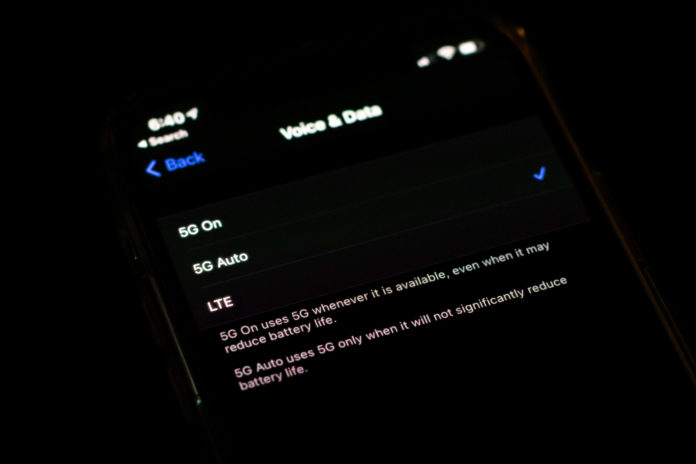
By Samantha Bradsky | Reporter
Personal devices using the 5G network could cause a national crisis.
In the world of consumerism and commercial technology, the spectrum impacts many consumer devices. What many fail to recognize are the other industries competing with personal devices to use the spectrum as well.
According to SDxCentral, the 5G spectrum refers to the fifth-generation network of radio frequencies. Baylor’s website refers to the spectrum as constituting “all available frequencies for wireless communication between devices with applications for radio and television broadcasts, RADAR, GPS, cellular voice and data service.”
Charles Baylis — professor of electrical and computer engineering and director of the wireless and microwave circuits systems program — said to imagine the wireless spectrum as real estate. Each phone using 5G wireless acquires some of this real estate. While the demand for the spectrum increases, the real estate of the spectrum remains a finite resource.
“It turns out that on a national level, there is a lot of concern that we’re going to run out of this real estate because so many wireless devices are now coming into play,” Baylis said.
Baylis also directs the hub for Spectrum Management with Adaptive and Reconfigurable Technologies (SMART Hub) — a spectrum center at Baylor tasked with protecting the use of the spectrum. SMART Hub hopes to find a solution for the growing threat of spectrum overload.
What exactly do phones utilizing the 5G spectrum threaten?
“When I say ‘spectrum,’ that is essentially the collection of frequencies that are available for use — the real estate of wireless,” Baylis said. “It’s not just commercial wireless that uses it. The military has to use it for radars. The FAA has to use it for radars. When you fly a plane, the radars that are at the airport that track your plane, those all have to use the same spectrum; they can’t be interfered with by 5G devices.”
Baylis noted other potential implications of interrupted military signals, such as an inability to accurately detect foreign missiles in a timely manner. Additionally, natural disasters could become a concern.
“Believe it nor not, weather-sensing satellites actually use the spectrum,” Baylis said. “We’re doing a project right now where weather satellites are being threatened by interference from 5G. This can harm us severely. If we’re trying to predict a hurricane and we get interfered with, our advanced prediction won’t be as accurate.”
Regardless of the risks Baylis mentioned, 5G wireless has invaded daily life to the point of no return. Cellphone companies excitedly boast new products with 5G wireless technology, and consumers scramble to purchase the latest, greatest and fastest technology available.
Boston freshman Savannah Dean illustrated the alternate consumer mindset.
“I think 5G is convenient and innovative, and I don’t really care about the supposed risks associated with it,” Dean said.
Baylis said he realizes that the commercial use of 5G is not going away, which is why he currently researches ways to upgrade and advance military and weather radars to work with 5G.
“I think the solution is building all of our systems to be adaptive and reconfigurable, and that’s really what our research and even our whole center’s [SMART Hub] effort is centered around,” Baylis said. “We need to be able to find new ways for all devices to use the spectrum — to use this real estate — because it’s going to run out.”





